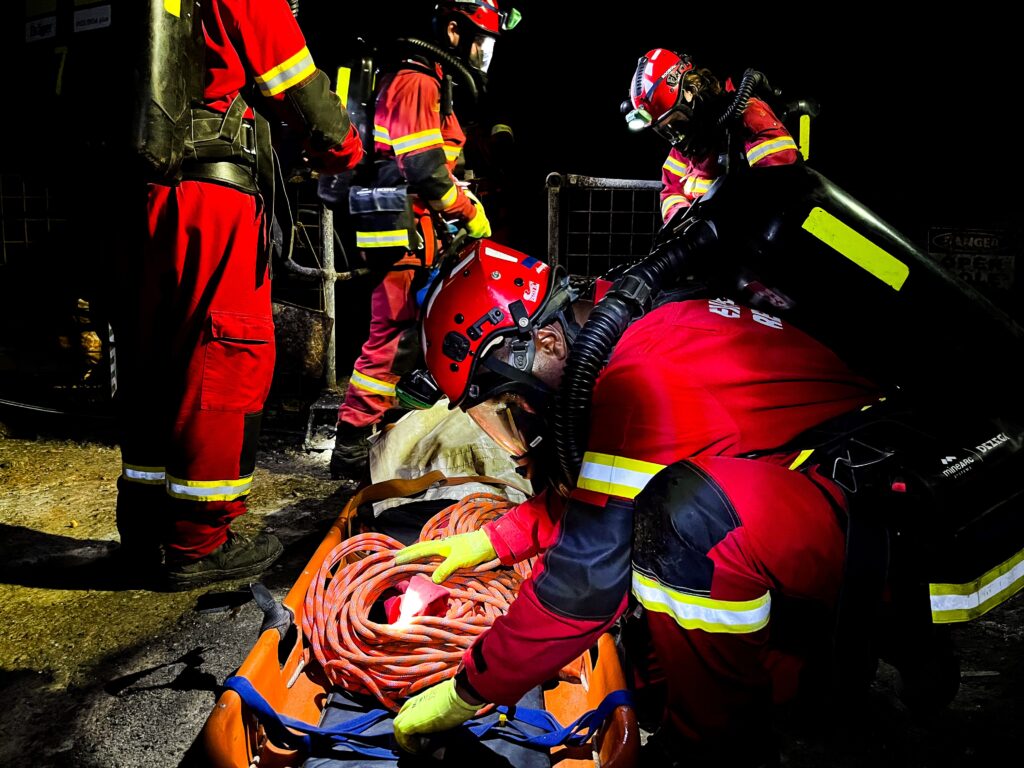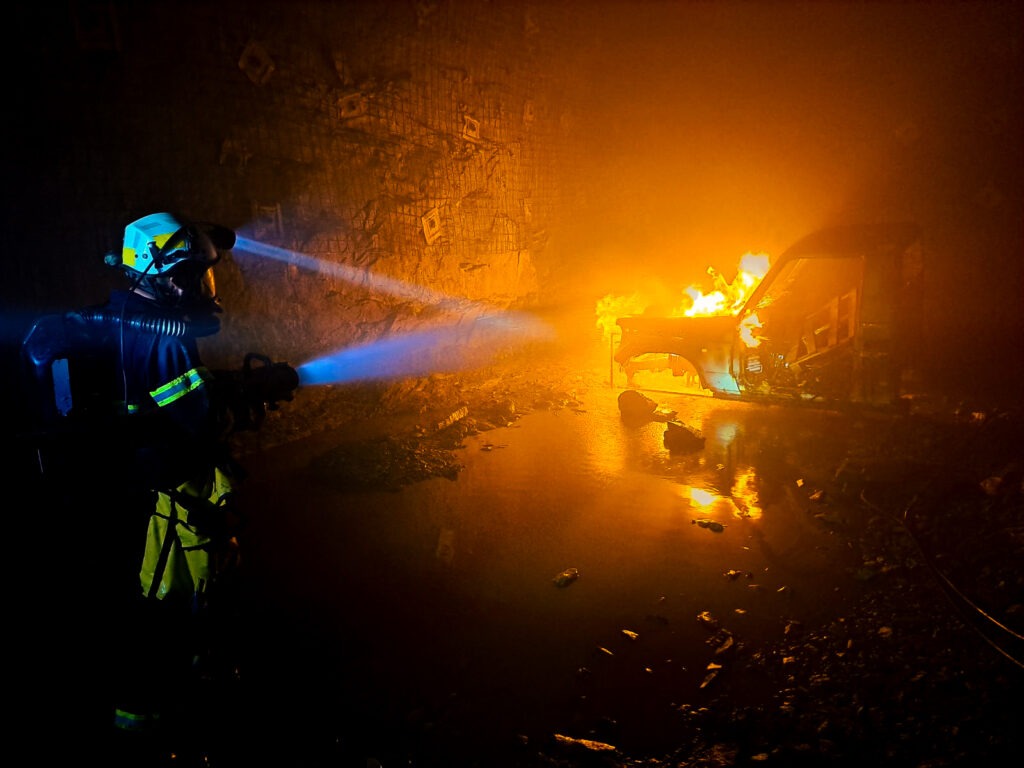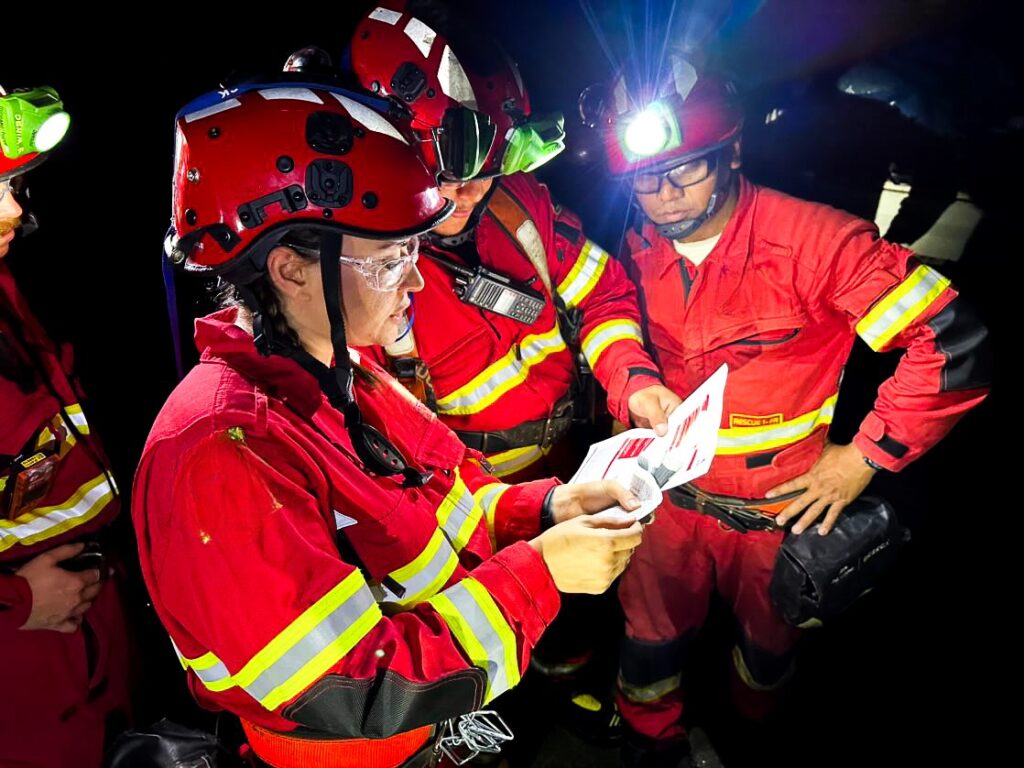Training Plan
Course Information
Course Length: 8 Days
Our Underground Rescue Operations training is a highly specialised program created to give participants the necessary skills to respond and control emergency incidents underground, particularly for the mining sector. This immersive and hands-on course addresses underground emergencies, with a focus on high risk confined space areas and including nationally recognised competencies that are essential in underground rescue and response.
Participants will develop the skills required to control underground fires (RIIERR305E), including fire suppression techniques suited to confined and pressurised environments. They will operate safely and effectively using self-contained regenerative oxygen breathing apparatus (RIIERR303E), critical for navigating toxic or oxygen-depleted areas. The course also covers the practical establishment and operation of a Fresh Air Base (RIIERR309D), which acts as a vital coordination and staging point during extended underground operations.
Throughout the program, participants will actively conduct underground searches (RIIERR306E) and perform casualty extrication (RIIERR307E) in challenging, live-fire conditions. These scenarios demand the application of advanced decision-making, teamwork, and incident management skills under live conditions. Trained by experienced trainers from the emergency response and mining industries, the course educates learners to be operationally prepared to protect life and assets under the ground.
By the end of the course, participants will be in a position to confidently handle underground fire emergencies, support team-based rescue operations, and preserve site safety and compliance regulations, significantly improving emergency preparedness for high-risk underground workplaces.
Training and Assessment delivered under the auspices and in partnership arrangement on behalf of Health Security & Education Pty Ltd, RTO 40907.



Course Outcomes
Upon successful completion of the Underground Live Fire course, participants will be equipped with the advanced skills and capabilities required to respond to underground emergencies with precision. They will be competent in controlling underground fires using appropriate suppression strategies and equipment (RIIERR305E), as well as safely operating regenerative oxygen breathing apparatus (RIIERR303E) to navigate hazardous, low-oxygen environments. Learners will be trained to establish and manage a Fresh Air Base (RIIERR309D), enabling coordinated incident response and prolonged operations during underground incidents.
Participants will also gain the skills to conduct underground searches in complex, low-visibility conditions (RIIERR306E), and extricate casualties safely from underground incidents (RIIERR307E), prioritising both casualty care and responder safety. The use of actual live fire throughout the course ensures that participants develop situational awareness, stress management, and practical decision-making skills under realistic emergency conditions. By the end of the course, participants will be fully prepared to contribute to underground emergency response teams, protect lives, and maintain compliance with mine site safety standards.
Units of Competency
Upon successful completion of the Initial Response course, each student will be awarded a nationally recognised statement of attainment. This certification acknowledges the achievement of key competencies essential for effective emergency response and rescue operations.
Students who attend and successfully meet all the course assessment requirements will receive a statement of attainment for the following Units of Competency:
- RIIERR303E Operate in Self-Contained Regenerative Oxygen Breathing Apparatus
- RIIERR305E Control Underground Fires *
- RIIERR306E Conduct Underground Searches
- RIIERR307E Extricate Casualties from Underground Incidents *
- RIIERR309D Establish and Operate from Fresh Air Base
*PUAFIR207 – Operate Breathing Apparatus; and RIIERR303E – Operate in Self-Contained Regenerative Oxygen Breathing Apparatus are pre-requisites for these units.
Site Requirements
What we need from the client:
Detailed Site Information: Information about the specific underground environments or facilities where the training will take place, including layout, existing safety measures, and potential fire hazards.
Participant List and Roles: A comprehensive list of participants, including their roles and levels of experience, to tailor the training content to their specific needs and ensure appropriate skill development.
Technical Setup: Ensure the venue is equipped with the necessary AV equipment, reliable Wi-Fi connectivity, and all tools required for interactive workshops and demonstrations. This setup will facilitate smooth delivery of both presentations and practical sessions.
Logistical Support: Provide assistance with transportation arrangements, recommend nearby accommodations, and manage local logistics to ensure a seamless experience for all participants. Coordination of these details will enhance convenience and comfort for trainers and trainees.
Compliance and Safety Requirements: Any specific compliance standards, safety protocols, or regulatory requirements that must be adhered to during the course, ensuring that the training aligns with organisational and industry standards.
Pre-Requisites
- PUAFIR207 – Operate Breathing Apparatus; and RIIERR303E – Operate in Self-Contained Regenerative Oxygen Breathing Apparatus are pre-requisites for this course.
Ideal pre-requisites for trainees:
Basic Fire Safety Knowledge: A fundamental understanding of fire safety principles, including fire behavior, fire types, and basic firefighting techniques.
Experience in Underground Operations: Prior experience working in underground environments, such as mining or tunneling, to ensure familiarity with the unique challenges of these settings.
Physical Fitness: Adequate physical fitness to participate in hands on, physically demanding activities, including navigating confined spaces and handling firefighting equipment.
Current Safety Certifications: Up-to-date certifications in relevant safety training, such as first aid or basic firefighting, to ensure preparedness for emergency situations during the course.
